The Useless
Concept of
‘Calories'
“卡路里”的无用概念
“Kǎlùlǐ” de
wúyòng gàiniàn
Currency (money) is useful because it represents a mutually agreed-upon means of measurement and exchange. That is, if we all accept American dollars as our currency of exchange, then items as disparate as a bus or an onion can be all measured in the same units. The bus is expensive and costs more dollars. The onion is cheaper and costs less dollars. But everything is measured in dollars and both parties accept dollars as the currency of exchange.
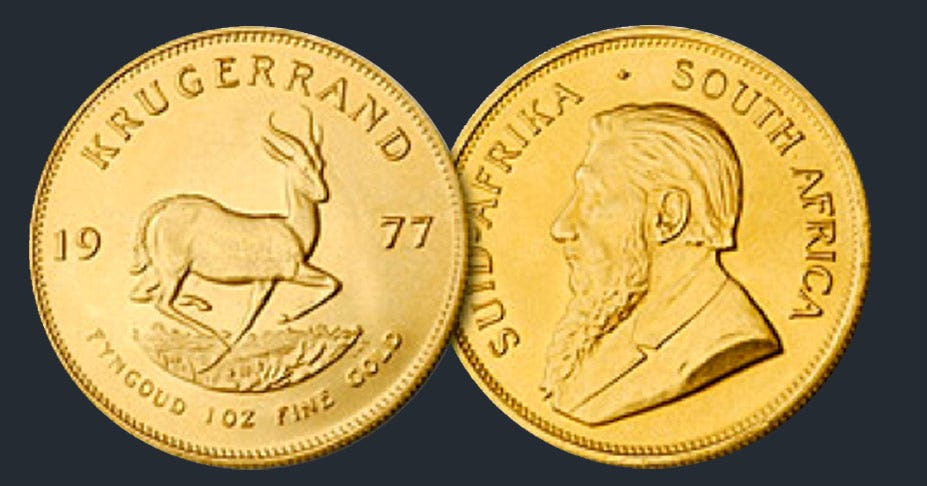
If one party decides to deal in dollars and the other accepts sea shells (used historically in some primitive cultures) or salt, then it is impossible to deal. There is no common currency. The buyer wants to use dollars and the seller wants sea shells. No deal. That is the value of a common currency, whether it is dollars, sea shells, Bitcoins or gold. There is only power as long as the two parties agree.
It is just like a common language. English is particularly useful because many people speak it. Therefore, in the United States, it is very likely that you can speak English and somebody understands you. In China, Mandarin is more useful than English, again because both people are able to speak it.
Microsoft dominated the software wars because it was the most popular, which automatically made it the most useful. It sure wasn’t the blue screen of death, or Microsoft Bob that made it useful. Man, I hated that stupid paperclip. Made me want to poke my own eyes out. But Microsoft was the common standard, which made it useful.

So, what is the common currency of weight gain? Many ‘experts’ claim that ‘calories’ fulfills this role of common currency. Sugar contains a certain number of calories and lettuce has less calories. We imagine, therefore that these calorically ‘expensive’ and ‘cheap’ foods can be measured on the same currency of calories, and the more calories you eat, the more fat you will gain. Often the ‘First Law of Thermodynamics’ is cited which states that energy is neither created or destroyed. This is completely fallacious because if we eat an extra 500 calories, our body may either burn it for body heat or store it as fat. Both situations follow the First Law of Thermodynamics but have drastically different effects on body fatness.
There are other ways, of course to measure different foods. You could simply weigh them. So 1/2 a pound of sugar is the same as 1/2 a pound of lettuce. This is simply a different currency. You could make the same “First Law of Thermodynamics argument” for weight as for calories. If you eat 1/2 pound of food, whether sugar or lettuce, you must gain 1/2 pound of weight. After all, how can your body gain more weight? Does weight come from thin air? How can it gain less weight? The weight of food simply disappears? Thermodynamics is a law, not a general suggestion. In both cases (weight and calories), the confusion arises because of an assumption that basal metabolic rate stays stable under all conditions, which is known to be false for the last, oh, hundred years. Metabolic rate may increase or decrease by up to 40%.
What’s crucially important, though, is to see if the body ‘cares’ about calories. Is it calories, or weight of food that serves as the common currency, or common language of weight gain? Does the body have some mechanism to count calories? Does the body have sensors to detect calories? Do we have an internal bomb calorimeter to measure calories and change behavior/ metabolism based on calories? No, no and no.
Your body doesn’t give a hoot about calories. Calories are not an accepted currency in our body. It does not count calories so why should you? A calorie is a calorie. So what? Who cares? Certainly not your body. Consider two foods of equal caloric value. On the one hand, you have a bit of sugary soda, and on the other is a plate of lettuce. Calories are identical. OK. So what? When you eat those two foods, does your body somehow measure these calories? No.
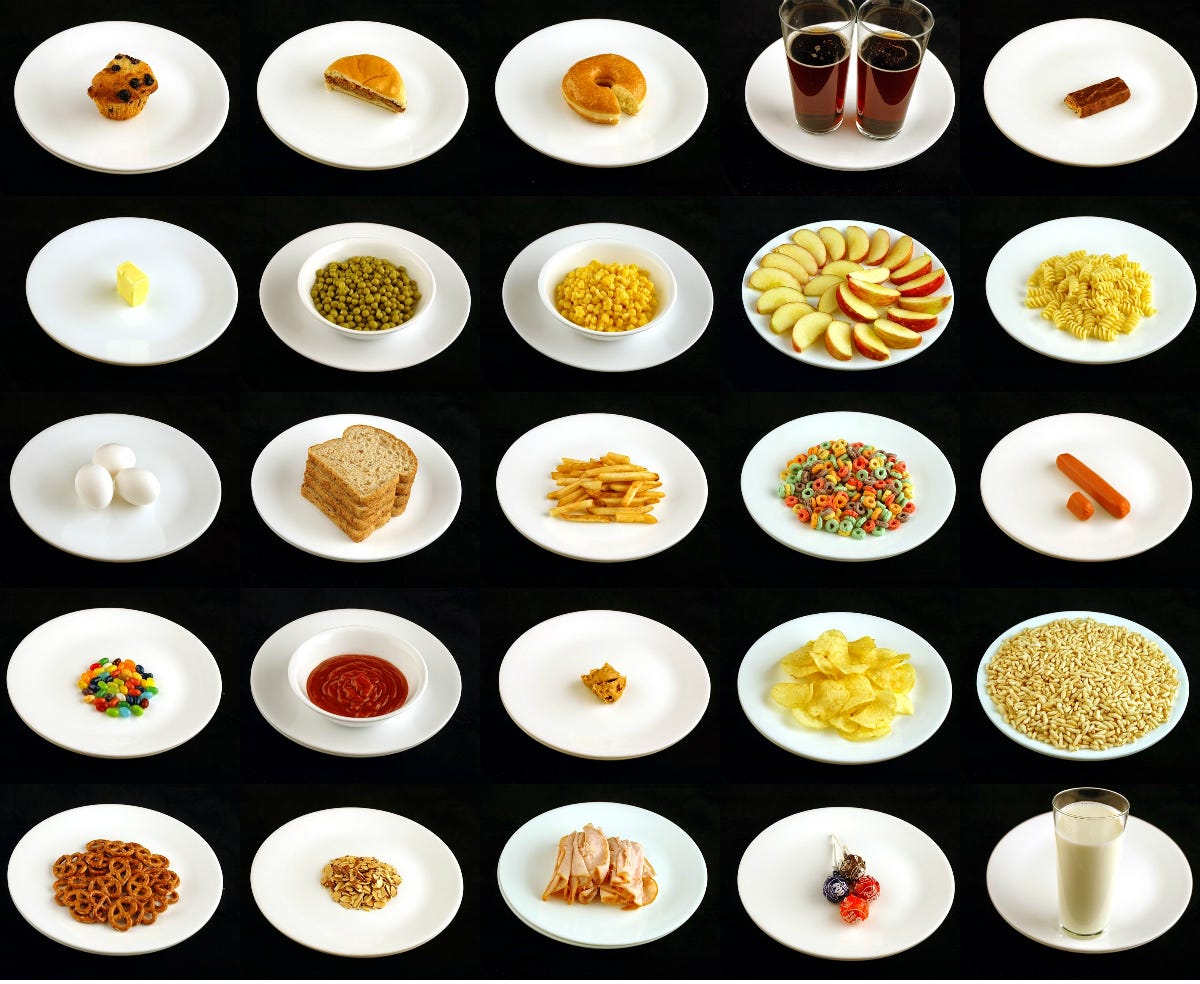
200 Calories
The metabolic effect of those two foods is completely and utterly different. Sugar will stimulate insulin. It will not activate any of the other satiety hormone. It does not activate stretch receptors in the stomach (satiety signal). It does not activate peptide YY, cholecystokinin (satiety hormones). A piece of steak, on the other hand, will do all those things. Therefore, you feel full after eating the steak, but not sated at all with the soda.
So, why do we pretend that all calories are equal? There’s nothing equal about them. Calories are not the common currency of the body. It’s like we’re walking around with a bunch of sea shells in our pockets and trying to buy a hamburger in Philadelphia. Everybody wants dollars and we want to pay in sea shells. The burger guy don’t care about sea shells. Our body don’t care about calories.
Consider the following metabolic pathway for the digestion of food.
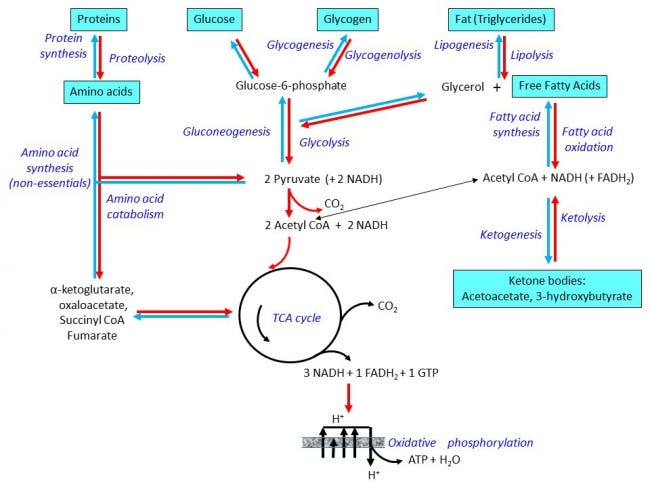
Or look more closely at metabolic pathway for glucose. There are even more detailed pathways for protein and fat.

My question is this: Do you see “Calories” mentioned on any part of these simplified pathways? We’ve spent the last hundred years detailing the intricacies of human metabolism. And nowhere in all of this work do you see the word “Calories”. Your body just doesn’t give two flying f***s about calories. It’s not the common currency. Here’s the bottom line truth. ‘Calories’ is NOT a physiologic concept, just as ‘weight of food’ is not a physiologic concept. Both are unit borrowed from physics. Longing for mathematical precision, obesity experts have severe ‘physics envy’, and try to shoehorn the useless physiologic concept of calories into a human biology that does not accept it.
The same applies to the weight of food, or the volume of food. Your body doesn’t weigh the food coming in, and doesn’t care. Eating a pound of lettuce and a pound of sugar produce completely different metabolic responses. In one case, the body may burn off that energy, and the other case, it may decide to store that fat. Weight is not the common currency.
Remember that a common currency only has power if both parties agree to its use. To understand weight loss, we need to understand what our body ‘cares’ about. The answer is clearly not ‘calories as seen clearly on the detailed charts above. The answer is ‘hormones’, predominantly, but not only insulin. Hormones run everything in our bodies.
Our body gains or loses fat according to detailed hormonal instructions from our brain. The rise and fall of insulin is the main stimulus to weight gain. So, food that stimulate insulin are typically more fattening (cookies). Those that do not (kale) are typically not fattening at all. If the body cares about insulin (and other hormones too, but mostly insulin), then we need to use the common currency, speak the common language of the body. Insulin.
Instead we use ‘calories’ and don’t understand why we can’t lose weight. Our body doesn’t comply because it has no idea what we are telling it. Imagine a tourist asks you for directions in a language you don’t understand. You tell him to go to the subway, but he doesn’t understand and instead goes to the coffee shop. So you speak slower and louder, but he still doesn’t understand and goes to the restaurant. Our body understands the language of ‘hormones’ and we are speaking ‘calories’.
Since our body is not likely to learn the language of ‘calories’, we need to learn the language of ‘insulin’, by translating foods into insulin effect instead of calories. You can estimate a foods insulin effect based on net carbs (carbs- fibre) + 0.54 protein. Even then, this formula only accounts for about 50% of the known insulin effect, so there is still much more we need to learn. The least insulinogenic diet is low carb, high fibre, moderate protein, high in natural fats. In other words, a real food, LCHF diet.
The same goes for counting carbohydrates. You body certainly responds to carbohydrates, but it doesn’t count them. Some carbohydrates will stimulate insulin and others will not. That means that all carbohydrates are not equal. Highly processed carbohydrates are very stimulating to glucose and insulin. Minimally processed carbohydrates have very little glucose or insulin effect.
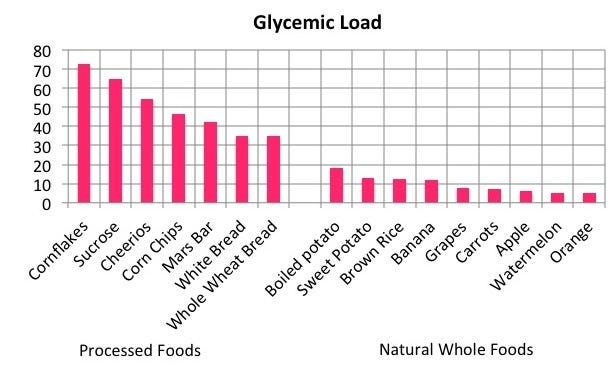
So remember, the common currency of the body is not calories. But neither is it dietary fat, protein or carbohydrates. It’s not fibre. It’s not ketones. The only currency the body really cares about is insulin. If you want to lose weight, reduce insulin. If you want to gain weight, increase insulin. That’s the common currency. Since our body only cares about insulin, we better learn the insulin effect of foods.
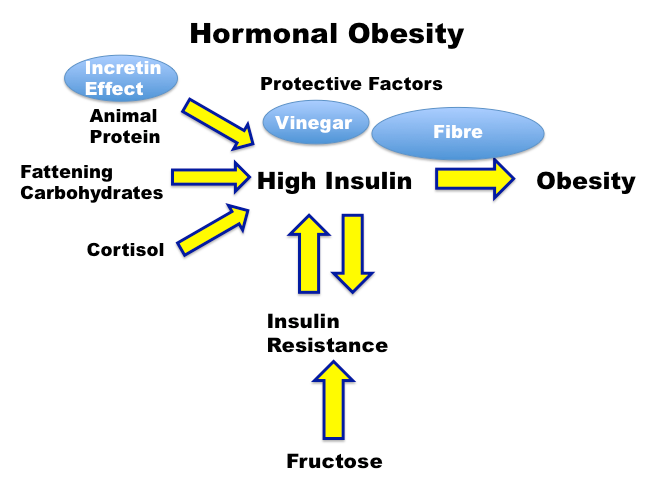
More details can be found in my book, The Obesity Code or listen to The Obesity Code podcast.
货币(金钱)很有用,因为它代表了双方商定的计量和交换手段。Huòbì (jīnqián) hěn yǒuyòng, yīnwèi tā dàibiǎole shuāngfāng shāngdìng de jìliàng hé jiāohuàn shǒuduàn. 也就是说,如果我们都接受美元作为交换货币,那么像公共汽车或洋葱这样不同的物品都可以用相同的单位来衡量。Yě jiùshì shuō, rúguǒ wǒmen dōu jiēshòu měiyuán zuòwéi jiāohuàn huòbì, nàme xiàng gōnggòng qìchē huò yángcōng zhèyàng bùtóng de wùpǐn dōu kěyǐ yòng xiāngtóng de dānwèi lái héngliáng. 公共汽车很贵,花费更多美元。Gōnggòng qìchē hěn guì, huāfèi gèng duō měiyuán. 洋葱更便宜,成本也更低。Yángcōng gèng piányí, chéngběn yě gèng dī. 但一切都以美元衡量,双方都接受美元作为交换货币。 Dàn yīqiè dōu yǐ měiyuán héngliáng, shuāngfāng dōu jiēshòu měiyuán zuòwéi jiāohuàn huòbì.
那么,体重增加的通用货币是什么? 许多“专家”声称“卡路里”履行了通用货币的角色。 糖含有一定的热量,生菜的热量较少。 因此,我们想象,这些热量“贵”和“便宜”的食物可以用相同的卡路里货币来衡量,吃的卡路里越多,你获得的脂肪就越多。 人们经常引用“热力学第一定律”,该定律指出能量既不会被创造也不会被破坏。 这是完全错误的,因为如果我们多吃 500 卡路里,我们的身体可能会燃烧它以获取热量或将其储存为脂肪。 这两种情况都遵循热力学第一定律,但对身体脂肪的影响却截然不同。
当然,还有其他方法来测量不同的食物。 你可以简单地称一下它们的重量。 因此,1/2 磅糖与 1/2 磅生菜相同。 这只是一种不同的货币。 您可以对体重和卡路里进行相同的“热力学第一定律论证”。 如果您吃 ½ 磅食物,无论是糖还是生菜,您的体重必定会增加 ½ 磅。 毕竟,您的身体如何才能增加更多体重? 重量是来自稀薄的空气吗? 怎样才能减重呢? 食物的重量就这样消失了? 热力学是一条定律,而不是一般建议。 在这两种情况(体重和卡路里)中,由于基础代谢率在所有条件下保持稳定的假设而产生了混乱,而在过去的一百年里,人们都知道这是错误的。 代谢率最多可增加或减少 40%。
然而,最重要的是看看身体是否“关心”卡路里。 卡路里或食物的重量是体重增加的通用货币或通用语言吗? 身体有一些计算卡路里的机制吗? 身体有传感器来检测卡路里吗? 我们是否有内部炸弹热量计来测量卡路里并根据卡路里改变行为/新陈代谢? 不,不,也不。
你的身体不会关心卡路里。 卡路里并不是我们身体所接受的货币。 它不计算卡路里,那为什么要计算呢? 一卡路里就是一卡路里。 所以呢? 谁在乎? 当然不是你的身体。 考虑两种热量相等的食物。 一方面,你有一点含糖汽水,另一方面,你有一盘生菜。 卡路里是相同的。 好的。 所以呢? 当你吃这两种食物时,你的身体会以某种方式测量这些卡路里吗? 不。
200 卡路里
这两种食物的代谢效果完全不同。 糖会刺激胰岛素。 它不会激活任何其他饱腹感激素。 它不会激活胃中的牵张感受器(饱腹感信号)。 它不会激活肽 YY、胆囊收缩素(饱腹感激素)。 另一方面,一块牛排就能完成所有这些事情。 因此,吃牛排后你会感到饱,但喝苏打水却一点也不饱。
那么,为什么我们假装所有卡路里都是相等的呢? 他们没有什么是平等的。 卡路里不是身体的通用货币。 这就像我们口袋里揣着一堆贝壳四处走动,试图在费城买一个汉堡。 每个人都想要美元,而我们想用贝壳支付。 汉堡店老板不关心贝壳。 我们的身体并不关心卡路里。
考虑以下食物消化的代谢途径。
或者更仔细地观察葡萄糖的代谢途径。 蛋白质和脂肪还有更详细的途径。
我的问题是:您是否在这些简化途径的任何部分看到提到“卡路里”? 在过去的一百年里,我们一直在详细研究人类新陈代谢的复杂性。 在所有这些工作中,你都看不到“卡路里”这个词。 你的身体不会对卡路里有什么大的误解。 它不是通用货币。 这是底线真相。 “卡路里”不是一个生理概念,就像“食物的重量”不是一个生理概念一样。 两者都是从物理学借用的单位。 肥胖专家渴望数学精确性,因此怀有严重的“物理学嫉妒”,并试图将卡路里这个无用的生理概念硬塞进不接受它的人类生物学中。
这同样适用于食物的重量或食物的体积。 你的身体不会称重进入的食物,也不在乎。 吃一磅生菜和一磅糖会产生完全不同的代谢反应。 在一种情况下,身体可能会燃烧掉这些能量,而在另一种情况下,它可能会决定储存这些脂肪。 重量不是通用货币。
请记住,共同货币只有在双方都同意使用的情况下才具有效力。 要了解减肥,我们需要了解我们的身体“关心”什么。 答案显然不是“从上面的详细图表中可以清楚地看到的卡路里”。 答案主要是“激素”,但不仅仅是胰岛素。 荷尔蒙掌控着我们体内的一切。
我们的身体根据大脑发出的详细荷尔蒙指令增加或减少脂肪。 胰岛素的升降是体重增加的主要刺激因素。 因此,刺激胰岛素的食物通常更容易让人发胖(饼干)。 那些不这样做的(羽衣甘蓝)通常根本不会发胖。 如果身体关心胰岛素(也关心其他激素,但主要是胰岛素),那么我们需要使用共同货币并讲身体的共同语言。 胰岛素。
相反,我们使用“卡路里”,却不明白为什么我们不能减肥。 我们的身体不服从,因为它不知道我们在告诉它什么。 想象一下,一位游客用你不懂的语言向你问路。 你让他去地铁,他不明白,反而去了咖啡厅。 于是你说得更慢、更大声,但他还是听不懂,就去了餐厅。 我们的身体理解“激素”的语言,而我们说的是“卡路里”。
由于我们的身体不太可能学习“卡路里”语言,因此我们需要学习“胰岛素”语言,将食物转化为胰岛素效应而不是卡路里。 您可以根据净碳水化合物(碳水化合物 - 纤维)+ 0.54 蛋白质来估计食物的胰岛素效应。 即便如此,这个公式也只占已知胰岛素作用的 50% 左右,所以我们还有很多东西需要学习。 产生胰岛素最少的饮食是低碳水化合物、高纤维、适量蛋白质和高天然脂肪。 换句话说,真正的食物,LCHF 饮食。 LCHF 饮食碳水化合物含量低,脂肪含量高,蛋白质含量适中。
计算碳水化合物也是如此。 你的身体当然会对碳水化合物做出反应,但它不会计算它们。 有些碳水化合物会刺激胰岛素,而另一些则不会。 这意味着所有碳水化合物并不相同。 高度加工的碳水化合物对葡萄糖和胰岛素有很大的刺激作用。 最低限度加工的碳水化合物对葡萄糖或胰岛素的影响非常小。
所以请记住,身体的共同货币不是卡路里。 但它也不是膳食脂肪、蛋白质或碳水化合物。 它不是纤维。 它不是酮。 身体真正关心的唯一货币是胰岛素。 如果你想减肥,就减少胰岛素。 如果你想增加体重,就增加胰岛素。 这就是通用货币。 由于我们的身体只关心胰岛素,因此我们最好了解食物的胰岛素作用。

No comments:
Post a Comment